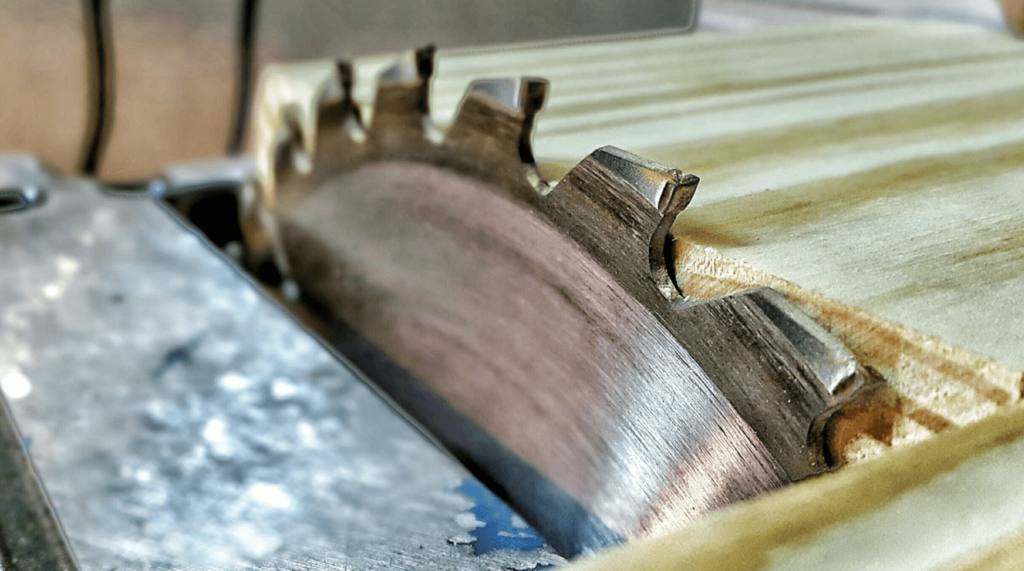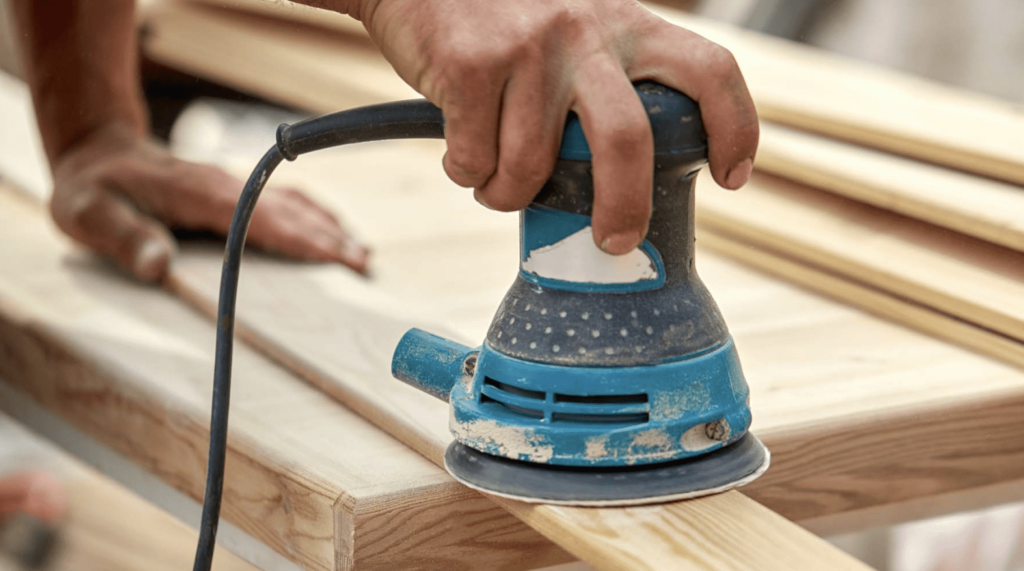Woodworking is a great hobby to do in your spare time. Having this skill will empower you to make furniture or small wood items that you need at home with pride and enjoyment.
Contrary to popular belief, woodworking is not that difficult to do. Each new project has its challenges, but so long as you keep safe and use the right tools and techniques, you can do it.
So here, we wrote a beginner’s guide on woodworking for you to use. We hope that this can jumpstart your woodworking journey so you can craft fine wood articles in the future, be they small or large.
Why You Should Learn Woodworking
Although you can get furniture from a store or family member who plans to move out, being able to do woodworking yourself is in and of itself a rewarding experience.
With it, you can expand your other skillsets like driving, swimming, or cooking. Furthermore, you will be able to tackle DIY projects with expertise and safety, which is also more economical.
Also, it’s never been easier to do it than now given the advanced equipment and resources both online and offline. It hones your creativity and problem-solving skills, and not to mention that it can be fun!
If you have some free time and want to spend your time productively, then woodworking is a great activity to do. That’s since it keeps your mind and body active, which serve to block out your negative thoughts.
The Must-Have Woodworking Tools for Beginners
Depending on your project, woodworking involves the use of different tools. There are those that you may need to cut, shape, join, and/or finish wood.
Here are some of the most essential and common tools you must have with you for crafting wooden articles:
1. Saw

A saw’s purpose is to cut wood to your desired length. This tool is used for almost every woodworking project.
What you see in the picture above is a handsaw that sharply cuts through the wood in a manual back-and-forth motion.
Other types include the frame saw for cutting shapes and curves on the board; handheld circular saws for making straight cuts; table saws that cut straighter and smoother lines, and more.
2. Blades

When it comes to table blades, there are two types that you can use for your woodworking project: rip-cut or cross-cut blades.
The main difference between them is in the blade shape and cut type. A rip blade has coarser teeth that can splinter and tear through the hardwood lengthwise, whereas a cross-cut blade has a set of sharp teeth that give a cleaner and finer cut from the side of the plank.
Unlike saws, blades aren’t portable as they are attached to the table. This allows you to cut wood by pushing it slowly onto the blade with your two hands—but remember to be safe and exercise caution whenever you’re using them.
3. Drills

Drills are used to dig a hole into the wood to hold screws or other fasteners in place. Compared to using a screwdriver to fasten objects, you can use a drill to save a great deal of time and effort.
It comes in various kinds and sizes, particularly, hand-cranked, motorized, and drill press versions. For a harder woodwork task, we suggest getting a motorized drill or drill press since they are more precise and forceful.
4. Chisels

Used for decorating, shaping, or part-cutting wood, a chisel is another must-have tool for woodworkers. It features a sharp tip at the end of a metal blade and a durable handle.
It’s often used together with a hammer to add proportional intensity in cutting away a wood board or material.
Not all chisels are made the same, however. For instance, there are paring chisels that are light to use and shouldn’t be hammered and mortise chisels that are the heavier and thicker variant.
5. Clamps

If you need to join together multiple pieces of wood, you would need a clamp to hold them securely against each other and prevent them from moving.
A clamp has a vise grip and rotatable handle to tighten the screw to keep the wooden blocks you’re working on in place.
Furthermore, remember to pick one that suits the job scale and difficulty that you’ll be mostly doing at home.
6. Sanders

Sanders smoothens, polishes, and even cleans wood surfaces. It does this by moving the sandpaper quickly against the wood surfaces it’s operating on.
To polish wood effectively, it has to go through a few grit levels starting from the coarsest to the finest. After each sequence, you can easily change the sander’s sandpaper with a different one.
Aside from that, sanders differ in kind and application. There are hand sanders fit for smaller projects and electric ones to tackle flat and large wood surfaces.
Common Woodworking Terminology
Besides knowing the essential woodworking tools, you have to familiarize yourself with the important woodworking terms because you will encounter them as you develop your skills.
These terms represent different techniques that you will use to accomplish your DIY projects. So, allow us to list them down and give a brief explanation of them below.
- Jointing
Jointing is the process of gluing the edges of the wooden boards to connect them. It’s possible to attach both flat and angled wooden joints.
This technique is vital for building cabinets, tables, chairs, puzzle toys, among others. Knowing how to do it properly will allow you to craft things like those to your exact specifications.
You might already have heard of a tongue-and-groove or mortise-and-tenon joinery. These have physical structures that make for easier attachment between two wood materials.
- Routing
When you hear this term, it simply means cutting a groove in the furniture so certain parts can fit in or be assembled easily. An electric or motor-powered router tool is needed to get this task done.
More importantly, it can cut wood straightly and evenly even on narrow boards—which can be hard to use with saws. Also, it can replicate the same cuts on multiple pieces of wood at once.
- Gluing
This is a technique for bringing two pieces of wood together. Proper gluing between the joints is essential for the stability and durability of the furniture or item being built.
- Planing
Planing pertains to smoothening and cleaning wood surfaces. It can remove timber residues from rough-sawn or salvaged boards so that you can use them anew.
Woodworkers can use either a handheld or bench planer according to the building job they have to do.
- Finishing
As the name suggests, finishing is the final step in making furniture. It involves applying a protective coating on wood surfaces to make them elegant, stylish, and long-lasting.
Additionally, this technique makes wood easier to clean and maintain because it seals off any open pores of the wood which bacteria use as an entryway.
DIY Woodworking vs Hiring Professional Woodworkers

You always have the option of hiring a professional woodworker or taking on the project yourself. Of course, a professional woodworker is better than calling a handyman or carpenter to make your furniture or wooden goods.
Between DIY and employing a professional woodworker, both are great options. They have their pros and cons and it depends on the individual which of the two he prefers.
Choosing the DIY route will allow you to improve your wood-crafting skills. The basic terms and tools are very easy to learn and use but you’ll need a bit of time to practice them, as opposed to hiring a professional woodworker who can custom build one for you without any effort on your part.
It’s definitely fun and exciting to learn to build your own chair or desk. However, you may face a challenge sooner or later and you’d have to do some thinking and trial-and-error to solve it.
Additionally, you can’t just jump in using a tool without knowing how to use it or at least check YouTube for instructional videos. Because doing that can endanger you and/or your family, or can result in an accident (knock on wood).
By hiring an expert, you can have peace of mind knowing that the woodworking task will be done well and to your high standards. It’s impossible, though, to get the finished result exactly as you want because you’re not the one doing it.
On the flip side, you may learn something new from just observing how a pro carries out the work, which can serve you in your future DIY endeavors.
If ever you’re not satisfied with the workmanship, a professional woodworker usually gives a warranty too. This way, you can get them to correct any imperfections on the furniture or cabinet and they will go on to work on them free of charge.
In a nutshell, DIY is a better choice if you want to learn woodworking—our advice here is to explore, learn, and try. Take it slowly by doing one small project after another, and you can gain new experience and skills as you keep on doing it.
That said, if you want none of the effort, perspiration, and mind-grappling, you can call in a veteran woodworker. They can help you reach your goals in an efficient, safe, and prompt manner, although you’ll have to pay a heftier rate.
Also, here’s a summary of the pros and cons of DIY and professional woodworking:
DIY Woodworking
Pros
- Improves your DIY building skills
- Affordable
- Work at your own pace
- Fun and challenging
- Fully customized work
Cons
- Some works demand a high level of expertise
- Can be time-consuming for beginners
- Have to buy your own safety gear and equipment
- Improperly using a tool has safety risks
- Learning concepts and techniques can take time
- No warranty given
Hiring a professional woodworker
Pros
- Efficient and skilled tradesmen
- High-quality craftsmanship
- Gives a warranty
- Can finish on time and within budget
Cons
- Expensive
- Does not improve your woodworking skills
- Final result may not be to your liking
Some FAQs about Woodworking

1. What’s the difference between woodworkers and carpenters?
Although both woodworkers and carpenters build things out of wood, using the same tools and methods, they have a few key differences.
First, woodworkers are more specialized in crafting custom and fine wood items, such as musical instruments, bed frames, doors, cabinets, and other furniture, while carpenters can create them too but in a more general way.
Secondly, carpenters don’t just work with wood, but they also work with plastic, metal, and steel. This includes large buildings and structures, which are out of the woodworkers’ repertoire.
And finally, unlike woodworkers, carpenters are skilled with using drywall and cement to construct homes. Some of them also offer painting and coating services, but not all.
2. Can you do woodwork at home?
Yes, but you’ll need a large space to do woodwork. You can use your garden shed as your woodshop, if it is large enough.
Because you have limited space, you can start investing in handheld and bench-top tools. Start small and accomplish small projects before moving on to a harder one.
Make sure the room where you carry out woodwork has plenty of ventilation and dust collection. And use your common sense—if it doesn’t feel safe, don’t do it.
3. Is DIY woodworking expensive?
It doesn’t have to be. And how much you have to spend will depend on the materials you plan to source, the tools you need, and the type of project you want to take on.
You can do small, inexpensive projects like making a few floating shelves, for one. To find design inspiration, you can just search it on Pinterest or Google.
Doing easy projects at first will help you familiarize yourself with the material and tool. When you have gained solid experience, you can then try more challenging projects.
From there, the costs can go up due to having to take advanced woodworking classes and upgrading your current equipment.
4. How much money do woodworkers earn?
Compared to plumbers and electricians, woodworkers make a lower salary of $16.23 per hour or $33,750 per year, according to the Bureau of Labor.
Despite that, you can earn a decent living by working as a woodworker. The price will depend on your experience level and the company you’re working for, among other factors.




